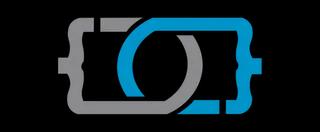Creating a Portfolio: The First Job Toward Getting a JobPublished: April 17th, 2024
Coders who are just starting out run into a common problem. You need experience to get a job, but how can you get experience without one? One answer is a stellar portfolio. A website portfolio with samples of your work can make all the difference for a coder seeking to land their dream job. Recruiters and hiring managers increasingly rely on portfolios to assess candidates' skills, creativity, and potential cultural fit for their organization. Here are ten solid tips to get you started on the right path.
1. Understanding the Purpose of Your Portfolio
Your portfolio serves as a visual representation of your skills, accomplishments, and the quality of your work. Whether you are a seasoned developer or a recent graduate, your portfolio should highlight your best projects and demonstrate your ability to solve real-world problems through code.
2. Choosing the Right Projects
Select a diverse range of projects that showcase your expertise in different technologies and problem-solving abilities. Since you might not have any work experience, consider including personal projects, freelance work, or even class assignments demonstrating your versatility and passion for coding. And yes, a “can-do” attitude can go a long way
3. Showcasing Your Best Work
When it comes to showcasing your projects, choose a few standout projects that you're truly proud of and provide detailed explanations of your contributions and the technologies you used. Include screenshots, code snippets, and links to live demos or Github repositories to give recruiters and hiring managers a comprehensive understanding of your work.
4. Providing Context and Documentation
In addition to showcasing your projects, provide context and documentation to help recruiters understand the problem you were solving and your thinking to solve it. Write clear descriptions of each project, including the technologies used, challenges faced, and lessons learned.
5. Demonstrating Collaboration and Teamwork
Many coding jobs require collaboration and teamwork, so it's essential to demonstrate your ability to work effectively with others. If you've collaborated on any projects, highlight your role. Include information about the team and how you contributed to the project's success.
6. Keeping Your Portfolio Updated
Make it a habit to regularly update your portfolio with your latest work, skills, and accomplishments. Remove outdated projects or technologies that no longer reflect your current abilities. Keeping your portfolio fresh and up-to-date shows that you're committed to continuous learning and improvement and makes it a tool that’s ready for any opportunity that might come along.
7. Making Your Portfolio User-Friendly
An easy-to-navigate portfolio can leave a lasting impression on recruiters and hiring managers. Choose a clean and professional layout that highlights your projects. Use clear navigation menus, intuitive design elements, and responsive layouts to ensure your portfolio looks great on all devices. This is the first project you will do for a potential employer. Make sure it looks its best.
8. Showcasing Your Personality
While technical skills are essential, recruiters are ultimately hiring YOU. Share your passion for coding, your interests outside of work, and what makes you unique as a developer. Consider including a brief bio or "About Me" section that gives hiring managers insight into who you are beyond your coding skills.
9. Soliciting Feedback and Iterating
Before sharing your portfolio with potential employers, seek feedback from peers, mentors, or industry professionals. They can provide insights and suggestions for improvement. Be open to constructive criticism and be willing to change your portfolio based on the feedback. Continuous refinement is key to creating a portfolio that effectively showcases your skills and impresses prospective employers.
10. Promoting Your Portfolio
Share your portfolio on professional networking sites like LinkedIn, include a link in your resume and cover letter, and leverage social media to reach a wider audience. Actively engage with the developer community, attend networking events, and participate in coding challenges to increase visibility and attract opportunities. Have your link handy on your phone so you can show it to anyone anytime.
Some Sample Portfolios
Here are some sample portfolios from other students at TrueCoders. Use them as inspiration and direction, but make sure you customize yours to fit your skills and personality.
https://elizabethcowell.github.io/ https://glebdydarev.github.io/Portfolio2/index.html https://thedocruby.dev/ https://lfost42-portfolio.netlify.app/ https://nancylee1.github.io/ https://josesanchez45.github.io/2023-Portfolio/
Starting a Career in Coding
Creating a killer portfolio is the first step toward landing your first job (or another job) as a coder. And don't forget – this is a skill that keeps on giving. As you go down your coding path after graduating from TrueCoders, continue building on your coding knowledge and improving that portfolio.
